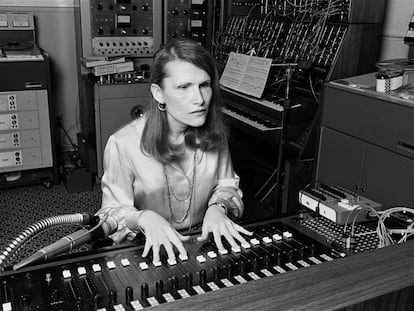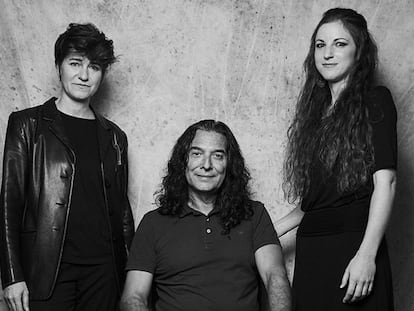‘On the dance floor, we are all equal. But not in the booth’: In 2023, electronic music continues to disregard women
Although dance music continues to be almost exclusively a male domain, a handful of females have managed to sneak into a universe where testosterone still reigns
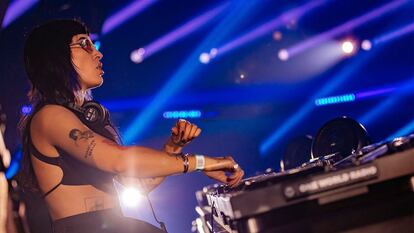
It was 2011 when the British DJ Maya Jane Coles became the first woman to reach number 1 on the list made by Beatport, a digital music store specialized in electronic music. The song, produced by Coles herself, was titled What They Say. For a few weeks that was the song that DJs from around the world played the most in their sets, a success that was also confirmed by the influential platform Resident Advisor in its list of the best songs of that year. Deep house, a type of electronic dance music with elements of jazz, funk and soul, was at that time the most sought after sound in world capitals like London or New York, and What They Say combined these influences with a brilliant production. The sensual melody eventually became a classic that stars like Nicki Minaj, Katy Perry and Lady Gaga used as the basis for some of their hits. Even now, there are some who theorize about that hit that Coles achieved when she was only 21 years old, which placed her at the top of the scene.
In 2012 there were only two women (Coles herself and Cassy) among the top 25 DJ superstars, according to Rolling Stone magazine. Ten years later, in 2022, the top 25 list of DJ Mag, the British media par excellence in the world of electronic music, has... also two women: Charlotte de Witte and Peggy Gou. Has anything changed?

Today, Coles no longer has the same role on the scene. Other women — Nina Kraviz, Indira Paganotto, Amelie Lens and DJ Soda, in addition to the aforementioned Charlotte de Witte and Peggy Gou — have taken their place in the dance scene. Then there is a second tier, with names like Dj Moxie, Mafalda, Colleen, Cosmo Murphy or the British Smokin Jo, who presents herself on Instagram as “The only female DJ to ever win DJ Magazine’s #1 DJ of the Year Award.” Which is true — except that it happened in 1992. Almost 30 years later, it is still such a rare achievement that she continues to use it as her slogan.
Female:pressure is an international database of female, transsexual and non-binary artists operating in electronic music and digital arts founded in 1998 by Austrian producer Susanne Kirchmayr, also known as Electric Indigo. This association publishes a report with data on the male-to-female ratio of artists performing at major international electronic music festivals in Europe and North America. According to the latest edition, only 27% of music festivals in 2020 and 2021 included women, even though there is an 18% increase from 10 years ago. According to DJ Tech Reviews, only 13 of all the electronic music festivals in 2022 were headlined by women. As for a glass ceiling, according to Forbes, which compiles a list of the highest-paid DJs in the world, no women were in the top 15 in 2019.
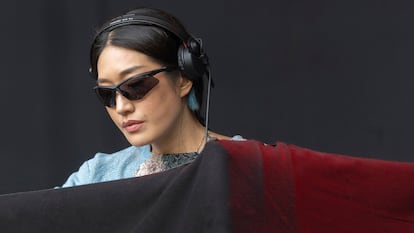
“When I started DJing in the 1990s, they wanted to hire me just because I was a girl, without having even heard what I did,” reveals Nono Rodríguez, head of the concert promoter Delicalisten and the brain behind some of the most interesting electronic music events in Spain. “I think that there is a very inclusive part in electronic music. When I started, clubs were the safest place for certain minorities regarding race or sexual orientation. On the dance floor, we were all equal. But that wasn’t the case in the booth. I think that artistic representation in clubs has evolved a lot, and the percentage of DJs who are not cis males is increasing. This inclusion and change in representation starts in the most underground scene, and from there it spreads to more commercial scenes. As for the scene in which I work, which is that of live experimental and avant-garde music, currently I think that women are the ones who are making a strong impact,” she reflects.
For many in the scene, the group that has worked the most to make women visible in the booths of North America and Europe has been Discwoman, a platform founded in 2014 by Frankie Decaiza Hutchinson, Emma Burgess-Olson (aka Umfang) and Christine McCharen-Tran, which has sought to showcase the wealth of talent of female DJs in the electronic music community. In Latin America, the last big step took place in the summer of 2022 when eleven all-female DJ collectives from all over the region signed a statement denouncing structural sexism in the music scene, triggered by the story of a DJ who was attacked by her ex-partner after he destroyed her equipment.
A few weeks ago, in Faith Fanzine, a London community around house music, the meme “Another female DJ doing nothing lol” was discussed to promote an article written by British journalist Sophia Stanford under the title Undervalued, Underpaid and Underappreciated. In the article, Stanford talks to women in the scene and says that, although the origins of house music are rooted in joy, freedom of expression and the opportunity to be yourself, structural forces have transformed the essence of the genre, which has become yet another reflection of the patriarchal structures in which we live.
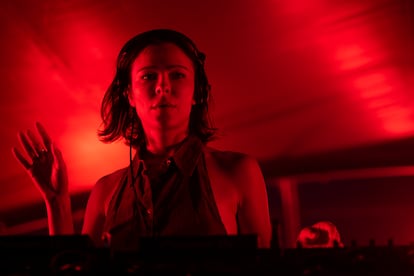
“I didn’t start writing the article with a preconceived idea or an agenda, but I had already heard stories where my DJ friends had been badly mistreated, so I had an idea of what might come up in these interviews and the questions that I wanted to ask. That said, while most of the experiences I heard were terrible, there were also really encouraging stories,” says Stanford. “I think more needs to be done to protect women and to help them, but change comes both from the system and on a personal level. It seems that this change is already taking place, and one would hope that the women who join today will not face the same challenges as their predecessors, who paved the way,” she reflects.

For Nono Rodríguez, this change that is already taking place has its roots in the underground scene, whose patterns the commercial industry always ends up replicating or absorbing. “In the more commercial scenes, men still have the stronger position, but in the more innovative festivals I think the reception is even more positive when the person on stage goes a little outside the conventional norms. There are very well-known female DJs in the mainstream, but I dare say that it has taken them longer to get there, and that their number remains almost anecdotal.”
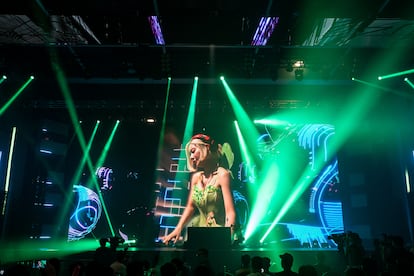
A music scene encompasses different sensibilities — promoters, artists, physical and virtual audiences — and, fortunately, the presence of women in the electronic scene is increasingly normalized, whether in DJ sets or in concerts of genres like ambient or techno. “I hope that we are very close to the point where gender really doesn’t matter and it’s only about the music,” reflects Nono Rodríguez.
Sign up for our weekly newsletter to get more English-language news coverage from EL PAÍS USA Edition
Tu suscripción se está usando en otro dispositivo
¿Quieres añadir otro usuario a tu suscripción?
Si continúas leyendo en este dispositivo, no se podrá leer en el otro.
FlechaTu suscripción se está usando en otro dispositivo y solo puedes acceder a EL PAÍS desde un dispositivo a la vez.
Si quieres compartir tu cuenta, cambia tu suscripción a la modalidad Premium, así podrás añadir otro usuario. Cada uno accederá con su propia cuenta de email, lo que os permitirá personalizar vuestra experiencia en EL PAÍS.
¿Tienes una suscripción de empresa? Accede aquí para contratar más cuentas.
En el caso de no saber quién está usando tu cuenta, te recomendamos cambiar tu contraseña aquí.
Si decides continuar compartiendo tu cuenta, este mensaje se mostrará en tu dispositivo y en el de la otra persona que está usando tu cuenta de forma indefinida, afectando a tu experiencia de lectura. Puedes consultar aquí los términos y condiciones de la suscripción digital.
More information
Últimas noticias
Alain Aspect, Nobel laureate in physics: ‘Einstein was so smart that he would have had to recognize quantum entanglement’
Imelda Castro, the woman who wants to rule the cartel battleground of Sinaloa
The new victims of the Republican war on Obamacare: Millions hit by soaring health insurance premiums
A country divided on migrant rights: Some US states expand protections while others restrict them
Most viewed
- David King, chemist: ‘There are scientists studying how to cool the planet; nobody should stop these experiments from happening’
- Reinhard Genzel, Nobel laureate in physics: ‘One-minute videos will never give you the truth’
- Oona Chaplin: ‘I told James Cameron that I was living in a treehouse and starting a permaculture project with a friend’
- Sinaloa Cartel war is taking its toll on Los Chapitos
- Mexico completes its trade shift with the entry into force of tariffs on China and countries without trade agreements
